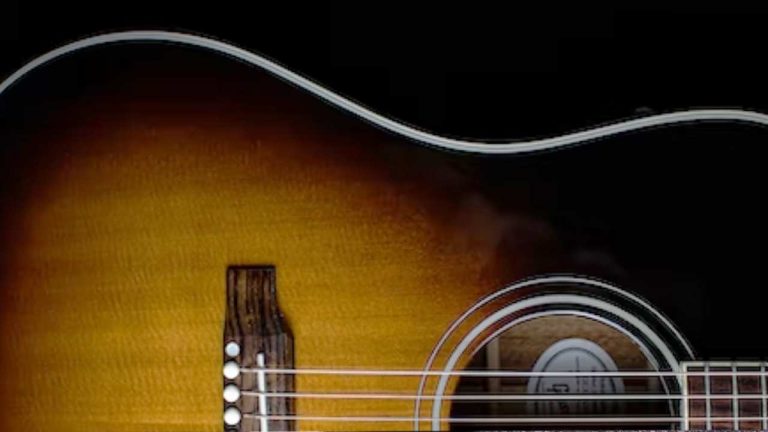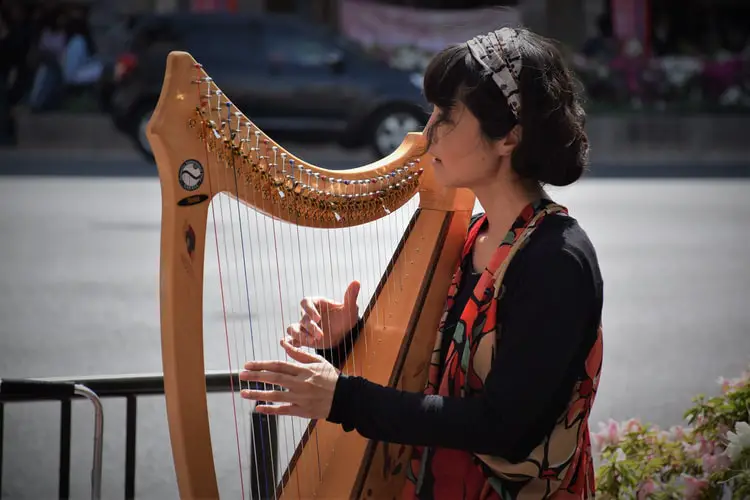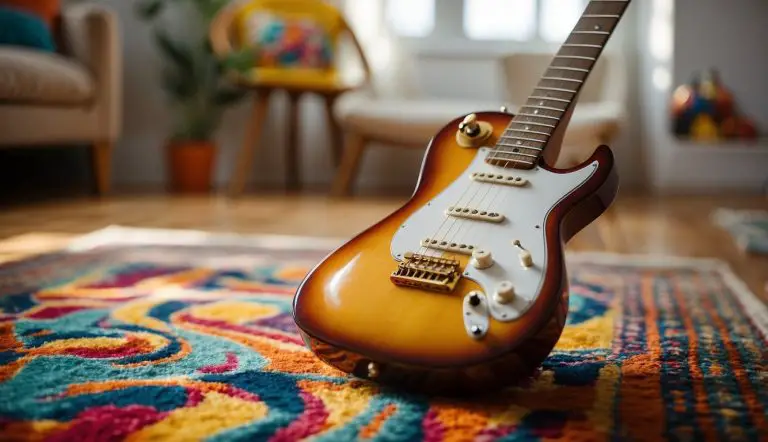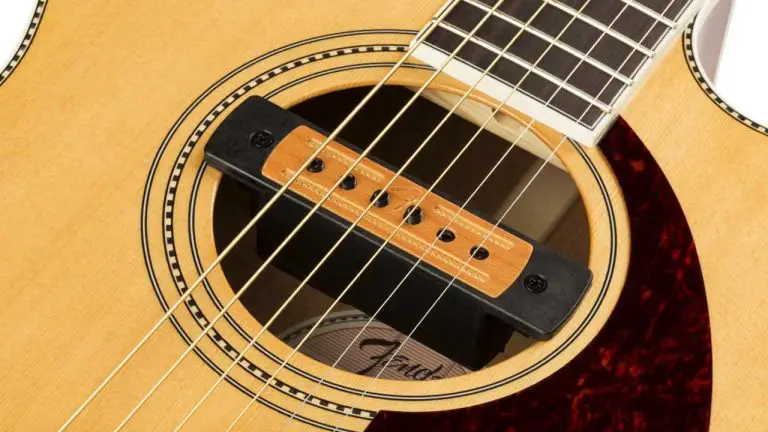Are Harp Strings the Same as Guitar Strings? Unveiling String Instrument Facts
Folkstrings.com is reader-supported. When you buy through links on our site, we may earn a small commission.
When considering the strings of a harp and a guitar, it may be tempting to assume they’re interchangeable due to their similar appearances. However, that is where most of the similarities end.
Harp strings and guitar strings differ greatly in terms of materials, tension, thickness, and purpose.
I’ve frequently seen the effects these differences have on the sound and playing technique of each instrument.
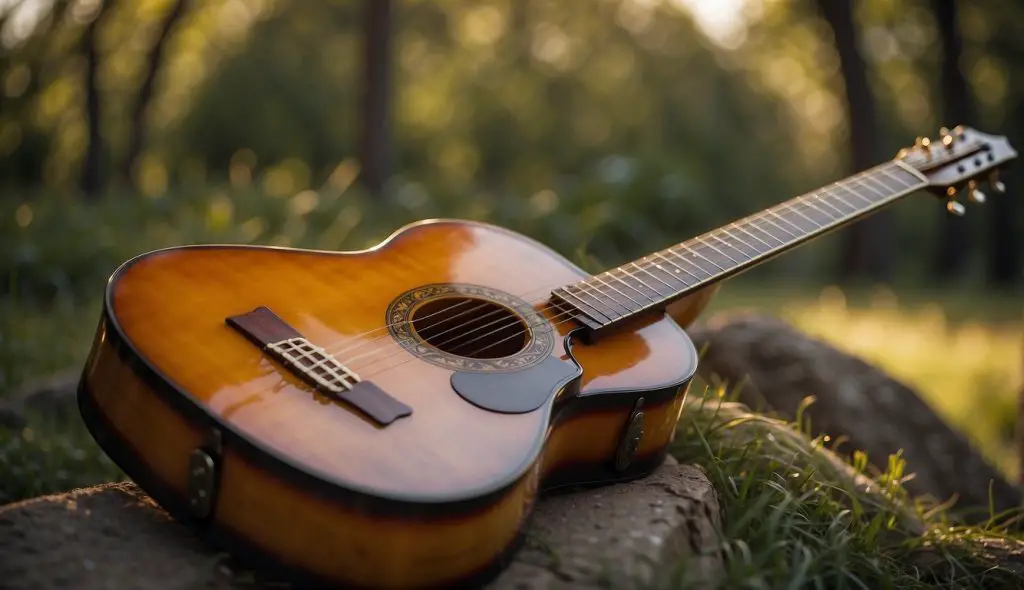
The harp, with its grand silhouette and orchestral depth, uses strings that can range from wire-strung to gut and more recently, nylon or synthetic materials. These strings are designed to resonate within the harp’s sound chamber, which in itself is a significant feature, differing vastly from the guitar’s construction.
Guitar strings, typically made from steel or nylon for classical guitars, are crafted to produce sound through the guitar’s own resonant body, which is smaller and structured differently than a harp’s.
The way strings vibrate and project sound in a guitar also reflects different engineering principles compared to a harp’s resonance.
Maintenance and tuning each stringed instrument follow distinct processes, reflective of their design and the musician’s needs.
Key Points
- Harp and guitar strings are designed with distinct materials and tension specifications.
- The unique sound chambers and string arrangements of harps and guitars contribute to their specific acoustic properties.
- Proper care and tuning of harp and guitar strings ensure their optimal sound quality and performance durability.
Table of Contents
Comparing Harp and Guitar Strings
In this discussion, I’ll explore how harp and guitar strings differ in their materials and construction as well as their individual characteristics.
Materials and Construction
Harp strings and guitar strings, although similar in some respects, are made of different materials suited to their specific instruments.
Harp strings can be composed of gut, nylon, or metal, with some variation like nylon wrap or metal wrap (often bronze) depending on the desired tone and durability.
Gut strings, historically common, provide a warm, rich sound that’s cherished in classical settings. Nylon strings offer a brighter tone and more durability, while metal strings typically found on pedal harps can produce a bright and clear sound with more sustain.
In contrast, guitar strings usually consist of either a nylon or metal core, with classical guitars predominantly using nylon strings. Acoustic guitars, meanwhile, often use steel strings with different types of metal windings, like bronze wrap, to enrich the sound.
String Characteristics
Regarding string characteristics, there are important distinctions to be made between harp and guitar strings.
String tension and gauges (thicknesses) are crucial, as they influence both the feel of playing the instrument and the quality of sound produced.
Harp strings, especially for pedal harps, require higher tension to achieve the correct pitch and a full-bodied sound. Tension can vary widely among harps, and because of this, harp strings are usually color-coded to help identify them – typically red for Cs, blue or black for Fs, and sometimes purple. This aids players in quick string identification during performances.
Guitar strings are also available in various gauges, from light to heavy, and players choose them based on the desired tone and playability.
Unlike harps, color coding is not standard practice for guitar strings; instead, they rely on consistent positioning and standardized gauging to help players navigate them.
Manufacturers and brands also play a significant role for both instruments, with certain ones like D’Addario and Ernie Ball being popular among guitarists, and Salvi or Lyon & Healy preferred in the harp community.
Harp Design and String Arrangement
In discussing harp strings and their arrangement, I’ll outline the unique anatomical features of the harp and delve into how it is tuned, including its note range.
Anatomy of the Harp
My exploration starts with the anatomy of a harp.
The harp, unlike a guitar, features strings at varying lengths and tensions, which resonate against a soundboard. Two main types of harps are widely recognized: pedal harps and lever harps.
A standard pedal harp, also known as a concert harp, has 46 or 47 strings and seven pedals at the base, which I press to change the pitch of the strings by altering their tension. The strings are color-coded: C strings are red, and F strings are blue, which aids in navigation.
While pedal harps use pedals to change pitches, lever harps use levers at the top of the strings. Each string on a harp passes over a bridge pin and is wound around a tuning pin on the neck. This configuration allows me to finely adjust each string’s pitch.
Additionally, many harp strings, especially in lower octaves, may be wire-wrapped to enhance their vibrational characteristics.
Tuning and Note Range
Turning my attention to tuning and the note range of a harp, the scale of the strings spans over six octaves in a typical pedal harp.
Tuning a harp is a meticulous process that involves adjusting the tension of each string via the tuning pins using a tuning key. Harp strings are tuned to the natural notes of the scale.
By manipulating the pedals, I can raise the pitch of each string by one or two semitones, which gives me access to all the chromatic notes.
Harp strings in the upper octaves are thinner and generally made from gut or nylon, providing a crisp and delicate sound. The lower octaves often have thicker, or even wire-wrapped strings to produce a fuller, resonant tone.
Playing Technique and Sound
As a musician, I find that the way I play a stringed instrument directly influences the sound it produces, and this is particularly true when comparing harp and guitar strings.
Differences in Playing
When I play the guitar, I notice that my fingers or a plectrum can both be used to strum or pluck individual strings.
The motion is typically more forceful than with a harp, as guitar strings are sturdier and often made of steel or nylon wrapped in metal.
In contrast, playing the harp involves a more delicate touch.
Harp strings are plucked with the fingertips, and each string’s tension varies, impacting how much motion I need to use to produce a clear sound.
Here’s a basic comparison:
- Guitar Playing: More force, plectrum or fingers, meant for strumming or plucking.
- Harp Playing: Gentle touch, fingertips only, plucking individual strings with consideration to tension.
Tonal Quality and Resonance
The tone of harp strings typically carries a soft, rich, and resonant quality that’s ideal for both accompaniment and melody.
Each string, when plucked, resonates with a sustained sound that’s quite distinctive, something I attribute to the larger soundboard and the open cavity of the harp’s body.
Guitar strings, on the other hand, have a more direct and often brighter tone.
The sound does not ring out as long, which suits a variety of playing techniques—from rhythmically driving strumming patterns to intricate fingerpicking that adds texture to a song.
Here are the tonal differences:
- Harp Sound: Soft, sustained, and resonant; great for flowing melodies and clear accompaniment.
- Guitar Sound: Direct and succinct, offers versatility in playing styles, from rhythm to lead.
Maintenance and Tuning
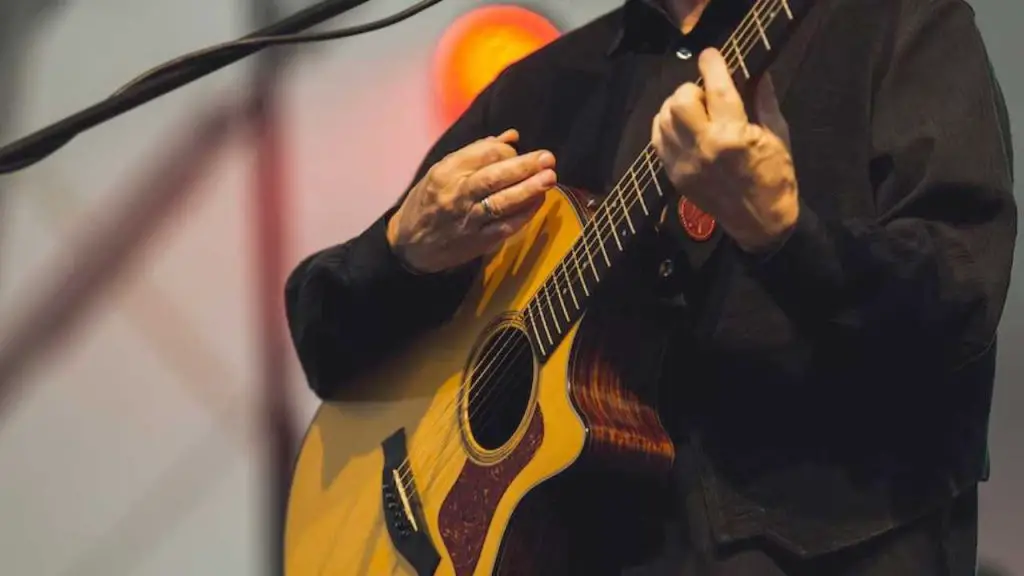
Managing the strings of harp and guitar instruments is vital to their performance and sound. Proper maintenance ensures longevity and tuning accuracy, essential for a quality playing experience across various genres.
Changing Strings and Tuning
When I change a harp string, I usually replace it with a monofilament nylon or gut string, depending on the harp’s requirements.
To do so, I thread the new string through the tuning pin and secure it. I then wind it around the tuning peg, taking care to avoid kinks.
For guitars, the process involves feeding the string through the bridge, pulling it taut to the headstock, threading it through the tuning peg, and winding it carefully.
Steps to Change a Harp String for my Harp:
- Remove the old string by loosening the tuning peg.
- Thread the new string through the tuning pin and pull it through the soundboard.
- Secure the string at the soundboard with a knot or a string anchor.
- Wind the string around the tuning peg, leaving no slack.
- Tune the string to the correct pitch, using a tuning device as a guide.
Tuning my Guitar:
- Turn the tuning pegs gently until each string reaches the desired pitch.
- Utilize a tuner to ensure accuracy, especially for specific genres where precise tuning is crucial.
Care to Prevent Damage
Maintaining optimal humidity levels is essential to prevent damage to both harp and guitar strings, and their wooden components.
I regularly monitor the humidity and temperature of the room where I store my instruments to prevent warping or cracking.
- Aim for a relative humidity of 45-55% for both instruments.
- Use humidifiers or dehumidifiers as needed to maintain stable conditions.
Regular visits to a luthier are a key aspect of instrument care. These professionals can detect early signs of damage and perform essential repairs or adjustments.
Preventive Measures for my Instruments:
- Avoid extreme temperature changes.
- Loosen the strings slightly when not in use to reduce tension on the neck.
- Clean the strings after playing to remove oils and dirt.
By adhering to these maintenance and tuning practices, I ensure that my harp and guitar remain in optimal playing condition.
Frequently Asked Questions
Before we jump in, I want to clarify that although harp and guitar strings may look similar, they have different characteristics and are not typically interchangeable.
Let’s address some common questions regarding these strings.
Can I use guitar strings on a harp?
No, using guitar strings on a harp is not advisable. Harps require specific string types that can handle the instrument’s tension and produce the intended sound quality.
Guitar strings are designed with different tension requirements and might not withstand the harp’s stress or fit its string length.
What kind of strings are used on a harp?
Harp strings can be made from different materials such as nylon, gut, and various metal wires. The choice of string material affects the harp’s tone and the tension on the instrument.
How often do harp strings need to be replaced?
Harp strings should be replaced every one to two years as a general guideline. However, this can depend on the amount of usage, environmental conditions, and the material of the strings.
What are the differences between harp and guitar strings?
Harp and guitar strings differ in construction, gauge, and tension. For example, harp strings must endure higher tension and, therefore, are typically made thicker and sturdier than guitar strings.
Each string on the harp is designed to resonate properly within its much larger frame.
How similar are harp and guitar in terms of their strings?
While both instruments use strings to produce sound, the similarities are not substantial. The material, gauge, and tension specifications for harp strings are quite distinct from those for guitar strings.
The playing techniques and resulting sounds are also very different.
Are there different types of strings for different harps?
Yes, different types of harps require different strings.
For example, lever harps and pedal harps will have strings that are specific to the size, tension requirements, and range of the instrument.
The materials used for these strings may also vary to accommodate different types of music and playing styles.
Author Profile
-
Daniel Johnstone is an English writer with a love for stringed instruments from around the world.
He shares his love for these instruments through his writing for folkstrings.com, a website dedicated to all things related to folk string music.
Daniel's passion for music started at a young age, and he has since become an accomplished musician, playing guitar, cavaco, and recently, the harp.
His dedication to learning and sharing his knowledge of stringed instruments is evident in his insightful and engaging blog posts. Whether you're a seasoned musician or a beginner, Daniel's writing is sure to inspire and entertain you.
When he's not playing music or writing, you can find Daniel exploring new instruments and seeking out new sounds to share with his readers.
Latest entries
 AutoharpApril 4, 2024What Is the Autoharp Made Of: Exploring Its Materials and Craftsmanship
AutoharpApril 4, 2024What Is the Autoharp Made Of: Exploring Its Materials and Craftsmanship AutoharpApril 4, 2024Is Autoharp Easy to Play? Unveiling the Truth for Beginners
AutoharpApril 4, 2024Is Autoharp Easy to Play? Unveiling the Truth for Beginners AutoharpApril 4, 2024What Is an Autoharp Worth? Your Guide to Pricing and Value
AutoharpApril 4, 2024What Is an Autoharp Worth? Your Guide to Pricing and Value AutoharpApril 4, 2024Are Autoharp and Zither the Same Thing? Unraveling String Instrument Myths
AutoharpApril 4, 2024Are Autoharp and Zither the Same Thing? Unraveling String Instrument Myths
Affiliates:
This post may contain affiliate links that at no additional cost to you, the site may earn a small commission. We only recommend products we would use ourselves and all opinions expressed on this site are our own.
Accuracy Advice:
While we strive to provide up-to-date and accurate information, the content in this article may not reflect the most current research or medical guidelines. We encourage readers to do further research and consult with professionals for more personalized advice.
Our Recommendations:
The products and services mentioned in any of our articles are recommended based on our independent research and personal experience. We are not sponsored by any company. We aim to suggest products and services we believe are of high quality and could be beneficial to our readers.

